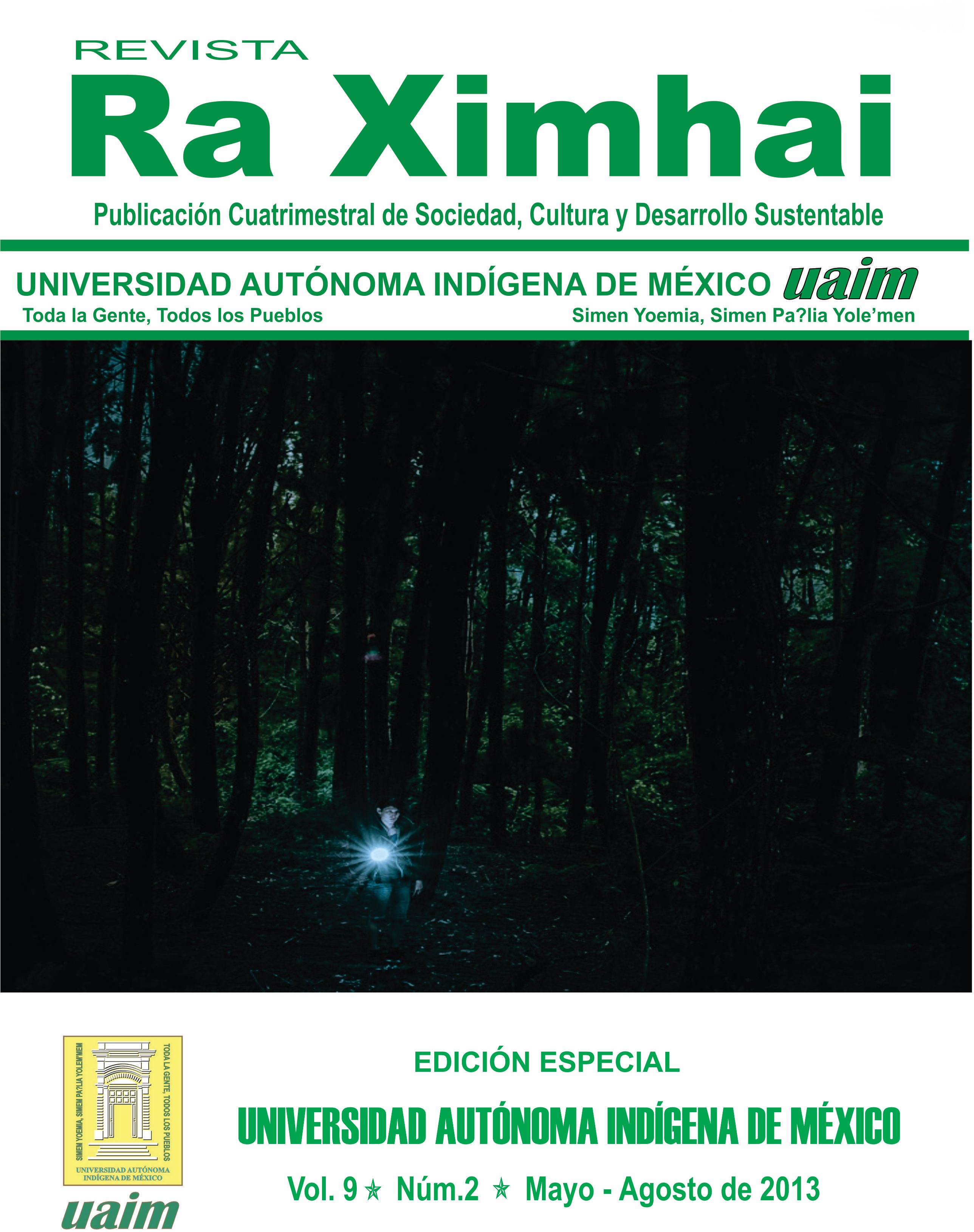Horticultural diversity for food security in marginalized municipalities of the state of Puebla
DOI:
https://doi.org/10.35197/rx.09.02.e.2013.11.mbKeywords:
Backyard, Peasant Domestic Unit, peasant womanAbstract
For rural families, backyards represent a strategy that ensures they obtain food of plant and animal origin that enriches and complements their diet. Unfortunately, there is no evidence of the contribution that the horticultural component makes through the biodiversity of species, in relation to food, income generation and the exchange of vegetables. Based on the above, the need to carry out an investigation was planned, the general objective of which was to analyze the horticultural subsystem that integrates the backyards intervened by the State Food Security Program (PESA Estatal) establishing the food, economic and social contributions of the horticultural component obtained by the Peasant Domestic Unit (UDC), in the communities of Canoas-Atempan, Tezotepec-Chignautla and Mazatonal-Yaonáhuac in the Northeastern Sierra of the state of Puebla. In this northeastern region there are 16 municipalities with high marginalization and 8 with very high marginalization of the State, the population is of Nahuatl origin and it is common for women to be responsible for the management and operation of the backyard based on their traditional knowledge and survival strategies. The field work was carried out from March to June 2011, with the participation of 37 rural women. Some of the results found are: In the communities of Canoas and Mazatonal, 77% of the horticultural production was destined for food, 15% for marketing and 8% for strengthening social relations within the community. In contrast, in the community of Tezotepec, 53% was destined for marketing, 46% for food and only 1% for strengthening social relations. There are also differences between communities in relation to the number of children, the diversity of vegetables cultivated, as well as the frequency of sowing and transplanting of vegetables that contribute to food security in the UDC.
Downloads
References
Álvarez, A.M.C. 2009. Horticultura familiar y seguridad alimentaria. Consultado el 14 de septiembre de 2011.
En: http://www.uaaan.mx/academic/Horticultura/Memhort05/horticultura.pdf
Barquera S., Rivera J., Gasca A. 2001. Políticas y programas de Alimentación y Nutrición en México, en Salud Publica de México. Vol. 43. No.5, septiembre-octubre.
Berrio R. A.M. 2009. Cosecha de aprendizajes: experiencia de mujeres por la soberanía alimentaria. Revista de Agroecología. Mujer y Seguridad Alimentaria.
Bifani Richard P. 2002. Algunas reflexiones sobre la relación género-medio ambiente. Revista de estudios de Género. Guadalajara, Jalisco. México.
CONAPO Consejo Nacional de Población, (2010). Índices de marginación por entidad federativa y municipio. Consultado el 03 de enero de 2012. En: http://www.conapo.gob.mx/index.php?option=com_content&view= article&id=478&Itemid=194
FAO 2010. Disminuye el hambre mundial, pero sigue inaceptablemente alta. Departamento económico y social. Consultado el 11 de marzo de 2011. En: http://www.derechoalimentacion.org/gestioncontenidosKWDEREC HO/imgsvr/publicaciones/doc/Informe%20FAO%202010%20sobre%20hambre%20en%20el%20mundo.pdf
García, 2006. Reseña. El estado de la inseguridad alimentaria en el mundo (SOFI): La erradicación del hambre en el mundo. Evaluación de la situación diez años después de la cumbre mundial sobre la alimentación (CMA) de Jacob Skoet y Kostas Stamoulis. Agroalimentaria, vol. 14, núm. 26, enero-junio, 2008, pp. 139-141. Universidad de los Andes. Mérida, Venezuela. Consultado el 15 de abril de 2011. En: http://redalyc.uaemex. mx/src/inicio/ArtPdfRed.jsp?iCve=199216339011
Jiménez, M. 2007. Foro internacional de Seguridad Alimentaria. México. Paredes y Álvarez. Evolución del PESA-FAO en México.
Jiménez-Osornio, Juan J., Ruenes M. R., Montañez P. 1999. Agrodiversidad de los solares de la península de Yucatán. En Biodiversidad y biotecnología, Número especial, Rel, Gestión de recursos naturales, segunda época.
Leach M. Joekes S. y Green C. 1995. Relaciones de Género y cambio. 107.
Mujer y Medio Ambiente A.C. 2008. Género y sustentabilidad: Reporte de la situación actual. Instituto Nacional de las mujeres. México, D.F.
NOM-043-SSA2-2005, Servicios Básicos de Salud. Promoción y educación para la salud en materia alimentaria. Criterios para brindar orientación. Consultado el 13 agosto de 2012. En: http://www.nutrinfo
.com/pagina/info/nom.pdf
Ortiz B. y Duval G. 2008. Sistemas complejos. Medio ambiente y desarrollo. Universidad Iberoamericana Puebla, Colegio de Postgraduados Puebla, Secretaria del Medio Ambiente y Recursos Naturales, Puebla, México.
Paredes J.A y Reyes E. 2008. Seguridad alimentaria en Puebla: prioridad para el desarrollo. México.
Rodríguez L 1995. Género, población y medio ambiente. En: http://www.cepis.opsoms.org/eswww/fulltext/pciuda da/género/género.html
Senra L., Leon I., Tenroller R., Curin L., Garcia D., Binimelis R., Bosch M., Herrero A., Arriola I., H., Iturbide A., Benito M., Guillamon A. y Pinto M.J. 2009. La mujeres Alimentan al Mundo. Soberanía Alimentaria en defensa de la vida y el planeta. Agencia Española de Cooperación al Desarrollo AECID. Barcelona.
Zavala L. 2011. SAGARPA: Incentiva México la participación de la mujer en el medio rural. Unión Campesina, 28 de junio.
Downloads
Published
How to Cite
Issue
Section
License
Copyright (c) 2013 María Elena Bonilla Aparicio, Blanca Alicia Salcido Ramos, Juan Alberto Paredes Sánchez, Luciano Aguirre Álvarez, María Esther Méndez Cadena, María de Lourdes Hernández Rodríguez

This work is licensed under a Creative Commons Attribution-NonCommercial 4.0 International License.
Usted es libre de:
- Compartir — copiar y redistribuir el material en cualquier medio o formato
- Adaptar — remezclar, transformar y construir a partir del material
- La licenciante no puede revocar estas libertades en tanto usted siga los términos de la licencia
Bajo los siguientes términos:
- Atribución — Usted debe dar crédito de manera adecuada , brindar un enlace a la licencia, e indicar si se han realizado cambios . Puede hacerlo en cualquier forma razonable, pero no de forma tal que sugiera que usted o su uso tienen el apoyo de la licenciante.
- NoComercial — Usted no puede hacer uso del material con propósitos comerciales .
- No hay restricciones adicionales — No puede aplicar términos legales ni medidas tecnológicas que restrinjan legalmente a otras a hacer cualquier uso permitido por la licencia.








